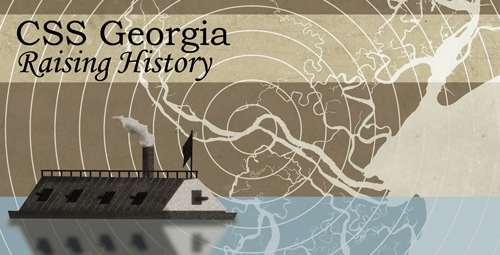 Recovery of the CSS Georgia is an important component of the Savannah Harbor Expansion Project. Archeologist Julie Morgan is the Corps' leading official in charge of the CSS Georgia recovery, which includes collection and analysis of artifacts, conservation, and a final technical report.
Recovery of the CSS Georgia is an important component of the Savannah Harbor Expansion Project. Archeologist Julie Morgan is the Corps' leading official in charge of the CSS Georgia recovery, which includes collection and analysis of artifacts, conservation, and a final technical report.
The CSS Georgia is an ironclad gunboat built for the Confederacy in 1862. A group of like-minded women, including merchants' wives and others formed the Ladies Gunboat Society in Savannah and raised funds from across the state for her construction. The vessel was designed by a citizens' committee led by foundry owner Alvin N. Miller and constructed in Savannah. Suitable supplies of iron and other building materials, as well as labor were in short supply during its construction. The vessel was completed and found to be too heavy to be powered under her own steam through the tidal waters of the Savannah River. As a result, Georgia spent her life as a floating battery moored upstream from lines of obstructions near the upper end of Elba Island by Fort Jackson. Her position and the river obstructions provided protection to the City of Savannah from a Union naval approach. The advance of General William T. Sherman's Union troops in 1864 caused Confederate troops to scuttle the vessel in the general area of where she now rests.
Deepening the Savannah River channel will adversely impact the wreck site, which is listed on the National Register of Historic Places. In order to mitigate these adverse impacts, the site will be excavated by archaeologists and all vessel remains and artifacts will be recovered. The investigation and subsequent artifact analysis, conservation, reporting and curation are in compliance with the 2012 Programmatic Agreement for Cultural Resources. The agreement was signed by representatives of the U.S. Army Corps of Engineers Savannah District, the Georgia State Historic Preservation Office, the South Carolina State Historic Preservation Office, and the U.S. Naval History and Heritage Command to ensure Savannah District’s compliance with Section 106 of the National Historic Preservation Act of 1966, as amended.